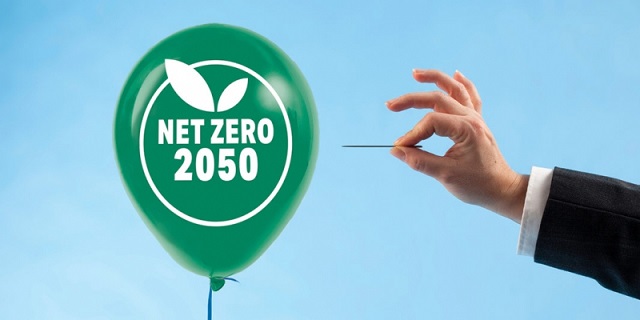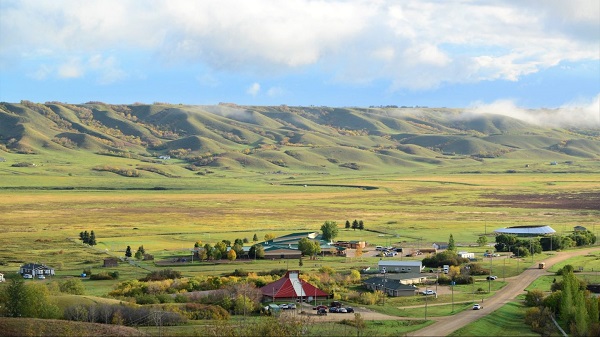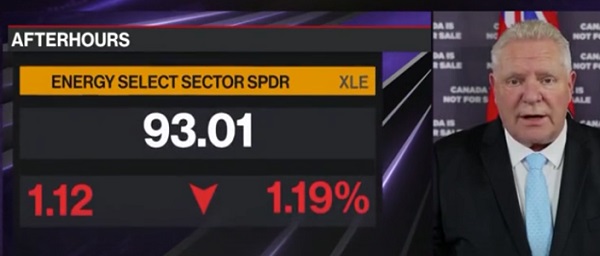Energy
Halfway Between Kyoto and 2050: Zero Carbon Is a Highly Unlikely Outcome

From the Fraser Institute
By Vaclav Smil
The global goal to achieve “net-zero” carbon emissions by 2050 is impractical and unrealistic, finds a new study published today by the Fraser Institute, an independent, non-partisan Canadian public policy think-tank.
“The plan to eliminate fossil fuels and achieve a net-zero economy faces formidable economic, political and practical challenges,” said Vaclav Smil, professor emeritus at the University of Manitoba and author of Halfway Between Kyoto and 2050: Zero Carbon Is a Highly Unlikely Outcome.
Canada is now also committed to this goal. In 2021, the federal government passed legislation mandating that the country will achieve “net-zero” emissions—that is, will either emit no greenhouse gas emissions or offset its emissions through other activities (e.g. tree planting)—by 2050.
Yet, despite international agreements and significant spending and regulations by governments worldwide, global dependence on fossil fuels has steadily increased over the past three decades. By 2023, global fossil fuel consumption was 55 per cent higher than in 1997 (when the Kyoto Protocol was adopted). And the share of fossil fuels in global energy consumption has only slightly decreased, dropping from 86 per cent in 1997 to 82 per cent in 2022 (the latest year of complete production data).
Widespread adoption of electric vehicles—also a key component of Ottawa’s net-zero plan—by 2040 will require more than 40 times more lithium and up to 25 times more cobalt, nickel and graphite worldwide (compared to 2020 levels). There are serious questions about the ability to achieve such increases in mineral and metal production.
Although the eventual cost of global decarbonization cannot be reliably quantified, achieving zero carbon by 2050 would require spending substantially higher than for any previous long-term peacetime commitments. Moreover, high-income countries (including Canada) are also expected to finance new energy infrastructure in low-income economies, further raising their decarbonization burdens.
Finally, achieving net-zero requires extensive and sustained global cooperation among countries—including China and India—that have varied levels of commitment to decarbonization.
“Policymakers must face reality—while ending our reliance on fossil fuels may be a desirable long-term goal, it cannot be accomplished quickly or inexpensively,” said Elmira Aliakbari, director of natural resource studies at the Fraser Institute.

Summary
- This essay evaluates past carbon emission reduction and the feasibility of eliminating fossil fuels to achieve net-zero carbon by 2050.
- Despite international agreements, government spending and regulations, and technological advancements, global fossil fuel consumption surged by 55 percent between 1997 and 2023. And the share of fossil fuels in global energy consumption has only decreased from nearly 86 percent in 1997 to approximately 82 percent in 2022.
- The first global energy transition, from traditional biomass fuels such as wood and charcoal to fossil fuels, started more than two centuries ago and unfolded gradually. That transition remains incomplete, as billions of people still rely on traditional biomass energies for cooking and heating.
- The scale of today’s energy transition requires approximately 700 exajoules of new non-carbon energies by 2050, which needs about 38,000 projects the size of BC’s Site C or 39,000 equivalents of Muskrat Falls.
- Converting energy-intensive processes (e.g., iron smelting, cement, and plastics) to non-fossil alternatives requires solutions not yet available for largescale use.
- The energy transition imposes unprecedented demands for minerals including copper and lithium, which require substantial time to locate and develop mines.
- To achieve net-zero carbon, affluent countries will incur costs of at least 20 percent of their annual GDP.
- While global cooperation is essential to achieve decarbonization by 2050, major emitters such as the United States, China, and Russia have conflicting interests.
- To eliminate carbon emissions by 2050, governments face unprecedented technical, economic and political challenges, making rapid and inexpensive transition impossible.
Author:
Business
Trump’s ‘Liberation Day’ – Good News for Canadian Energy and Great News for WCSB Natural Gas

By Maureen McCall
April 2 was ‘Liberation Day’ according to U.S. President Donald Trump. While the announcement of U.S. reciprocal tariffs was not good news for many countries, Trump’s announcement also had some good news for Canadian Energy companies – 0% tariffs. Some tariffs against Canada are still in place, but for now, no energy sector tariffs against Canada underscores the importance of Canadian energy to the Trump administration.
President Trump announced new tariffs on April 2nd, which he dubbed “Liberation Day” with a 10% baseline tariff for all U.S. trading partners, to go into effect on April 5th. He also announced more reciprocal tariffs against the “worst offenders,” which will go into effect on April 9th but no tariffs on Canadian energy were announced.

Trump’s Reciprocal Tariffs Announcement
Alberta Premier Danielle Smith celebrated the win which she says is precisely what she has been advocating for from the U.S. Administration for months.
“The United States has decided to uphold the majority of the free trade agreement (CUSMA) between our two nations. It also appears this will continue to be the case until after the Canadian Federal election has concluded and the newly elected Canadian government is able to renegotiate CUSMA with the U.S. Administration. It means that the majority of goods sold into the United States from Canada will have no tariffs applied to them, including 0% tariffs on energy, minerals, agricultural products, uranium, seafood, potash and a host of other Canadian goods.”
This is great news for Canadian energy producers, especially natural gas producers who are experiencing dramatic growth in the Montney.
At this year’s S&P Global CERAWeek, Mike Verney, Executive Vice-President of petroleum reserves with McDaniel & Associates Consultants Ltd. had great news for Canadian companies.
McDaniel’s study, commissioned by the Alberta Energy Regulator (AER), reported data indicating that Alberta has proven natural gas reserves of 130 trillion cubic feet (TCF), compared to previous provincial estimates of only 24 TCF. According to the study, if probable gas reserves are added in, the overall figure is 144 TCF.
As reported in the Financial Post, Verney said “We’re growing like mad in the Montney. The major natural gas plays in the U.S. are actually declining versus the Montney that is actually growing.”
This message was echoed by Michael Rose, the Chairman, President and Chief Executive Officer of Tourmaline Oil, Canada’s largest natural gas producer during his keynote address at the SPE Canadian Energy Technology Conference and Exhibition last month in Calgary.
Not a Sunset Industry

Michael Rose – Chairman, President and Chief Executive Officer of Tourmaline Oil
Rose opened his keynote speech with optimism saying: “This is not a sunset industry- it is closer to sunrise than sunset” and spoke about Canada’s compelling opportunity for natural gas production as well as Tourmaline’s successes.
Reuters reports that analysts are wondering about the U.S.’s ability to meet the demand growth of booming liquefied natural gas (LNG) projects and also to meet huge domestic demand for natural gas-fired electricity generation to supply new data centre growth. Canada’s resources in Alberta’s Deep Basin and the North East BC Montney will be a huge supply source.
Deep Basin and the Montney are where the most competitive gas plays are found, and where Tourmaline operates as well as producing oil in the Peace River Triassic Lake.
Rose credits technology development and the building and ownership of midstream infrastructures as keys to affordability and profitability for Canadian companies which can control costs by controlling more of the production cycle. In addition, AI optimization has helped the company increase production. He also pointed out the environmental advantage of natural gas production. Since society needs the energy density of hydrocarbons to power industries, natural gas is the best choice as it is “the cleanest member of the fossil fuel stack.” He quoted Arjun Murti– 30 year Wall Street research analyst, buy-side investor, and advisor covering the global energy sector now with Veriten.com who asserts that there is no real energy transition and the only thing humans have actually transitioned off in the energy world is whale oil.
Rose said that 2022 statistics indicated the world set a record for all sources of energy. He pointed out that coal was supposed to replace wood 200 years ago, and it still hasn’t while wood, which has been renamed as biomass is still 7% of the overall energy stack.
The Golden Age of Gas
Rose’s natural gas outlook to 2028 in Canada was rosy saying gas “never looked better.” Beyond 2028 also looks good with a proliferation of electricity generation planned to feed data centre growth. In Alberta alone, 15 projects are in queue which will create a material increase in demand. In the U.S. however, some large U.S. natural gas supply basins have reached a tipping point with only 50% estimated ultimate recovery (EUR) left. Rose reported that drilling inventory is an issue in the U.S. but not in Canada. For example, Tourmaline has over 20 years of Tier 1 drilling inventory left while its U.S. peers don’t have the same luxury. He noted that U.S. M&A is currently driven by a quest for inventory. He noted that U.S. companies will chase profitable acquisitions in a quest for inventory to lower future costs saying “Things are still cheap in Canada.”
Canadian Resources – Will we ever be an energy superpower?
With global exploration down sharply, focus has turned to the WCSB where in the case of the Montney, only 5% has been produced so far.
“All you hear about is the western Canadian sedimentary basin and it is a monster, and it is the gift that keeps on giving, but we’re actually blessed with multiple other opportunities. Like the U.S., a number of them are off limits for government policy reasons, but certainly changes are in order.”
Some of the undeveloped basins in Canada which Rose referred to as “forbidden basins” are located on the West Coast and in the lowlands in Quebec. The tariff issue may be changing attitudes towards oil and gas development in those areas. Dealing with an unsupportive Federal Government for the last decade has made capital attraction difficult. Routine talk about phasing out Oil and Gas and the series of regulations, bills and initiatives that have stalled basin development and new pipelines have taken its toll. It has discouraged capital from flowing into the sector – a period that Rose said “ felt like an endless hurricane.”
So what is the right path forward?
The challenge for industry and policymakers is finding the right balance between energy and the environment according to Rose. He advises that setting unrealistic goals and timelines that are not based in science/technology or economics won’t work, and notes a shift away from the time frame set by net zero.
“We look at the whole environment, air, land and water, and we develop plans to improve performance in all three. We have a group of young engineers working on what amounts to an embedded clean tech business within our company, and I think they’re having a lot of fun doing it.”
One of Tourmaline’s longest initiatives, is the conversion of drilling rigs from diesel to natural gas, using field gas for fuel. The result is that projects have an improved economic return as well as reduced emissions. Rose says this year, Tourmaline will cross a “200 million barrier” and will have displaced 200 million litres of diesel and save $200 million including the makeup gas used. He says they like to think of it as a drill bit to burn initiative.
Mike Rose still had an optimistic view of the path forward for energy companies that is certainly more relevant after yesterday’s “Liberation Day” announcement from Trump.
“We’ve missed 10 years of opportunities,” Rose said. “It would have made us so much stronger than we are today as an industry and a country. Still, late is better than never. The only thing I’ll say about tariffs is that they are just another curve ball. We’ve had nothing but curve balls for 10 years, and we’ll figure out how to hit this one too. Given how integrated both countries’ energy systems are and will continue to be, I think a great narrative that just might appeal is: ‘Let’s make North America the world’s preeminent energy and oil and gas superpower’.”
Maureen McCall is an energy professional who writes on issues affecting the energy industry.
Canadian Energy Centre
Saskatchewan Indigenous leaders urging need for access to natural gas

Piapot First Nation near Regina, Saskatchewan. Photo courtesy Piapot First Nation/Facebook
From the Canadian Energy Centre
By Cody Ciona and Deborah Jaremko
“Come to my nation and see how my people are living, and the struggles that they have day to day out here because of the high cost of energy, of electric heat and propane.”
Indigenous communities across Canada need access to natural gas to reduce energy poverty, says a new report by Energy for a Secure Future (ESF).
It’s a serious issue that needs to be addressed, say Indigenous community and business leaders in Saskatchewan.
“We’re here today to implore upon the federal government that we need the installation of natural gas and access to natural gas so that we can have safe and reliable service,” said Guy Lonechild, CEO of the Regina-based First Nations Power Authority, on a March 11 ESF webinar.
Last year, 20 Saskatchewan communities moved a resolution at the Assembly of First Nations’ annual general assembly calling on the federal government to “immediately enhance” First Nations financial supports for “more desirable energy security measures such as natural gas for home heating.”
“We’ve been calling it heat poverty because that’s what it really is…our families are finding that they have to either choose between buying groceries or heating their home,” Chief Christine Longjohn of Sturgeon Lake First Nation said in the ESF report.
“We should be able to live comfortably within our homes. We want to be just like every other homeowner that has that choice to be able to use natural gas.”
At least 333 First Nations communities across Canada are not connected to natural gas utilities, according to the Canada Energy Regulator (CER).
ESF says that while there are many federal programs that help cover the upfront costs of accessing electricity, primarily from renewable sources, there are no comparable ones to support natural gas access.
“Most Canadian and Indigenous communities support actions to address climate change. However, the policy priority of reducing fossil fuel use has had unintended consequences,” the ESF report said.
“Recent funding support has been directed not at improving reliability or affordability of the energy, but rather at sustainability.”
Natural gas costs less than half — or even a quarter — of electricity prices in Alberta, British Columbia, Ontario, Manitoba and Saskatchewan, according to CER data.
“Natural gas is something NRCan [Natural Resources Canada] will not fund. It’s not considered a renewable for them,” said Chief Mark Fox of the Piapot First Nation, located about 50 kilometres northeast of Regina.
“Come to my nation and see how my people are living, and the struggles that they have day to day out here because of the high cost of energy, of electric heat and propane.”
According to ESF, some Indigenous communities compare the challenge of natural gas access to the multiyear effort to raise awareness and, ultimately funding, to address poor water quality and access on reserve.
“Natural gas is the new water,” Lonechild said.
-

 2025 Federal Election1 day ago
2025 Federal Election1 day agoMORE OF THE SAME: Mark Carney Admits He Will Not Repeal the Liberal’s Bill C-69 – The ‘No Pipelines’ Bill
-

 2025 Federal Election1 day ago
2025 Federal Election1 day ago‘Coordinated and Alarming’: Allegations of Chinese Voter Suppression in 2021 Race That Flipped Toronto Riding to Liberals and Paul Chiang
-

 2025 Federal Election1 day ago
2025 Federal Election1 day ago‘I’m Cautiously Optimistic’: Doug Ford Strongly Recommends Canada ‘Not To Retaliate’ Against Trump’s Tariffs
-

 Business22 hours ago
Business22 hours agoCalifornia planning to double film tax credits amid industry decline
-

 Business1 day ago
Business1 day agoCanada may escape the worst as Trump declares America’s economic independence with Liberation Day tariffs
-

 Alberta2 days ago
Alberta2 days agoEnergy sector will fuel Alberta economy and Canada’s exports for many years to come
-

 Alberta1 day ago
Alberta1 day agoBig win for Alberta and Canada: Statement from Premier Smith
-

 2025 Federal Election1 day ago
2025 Federal Election1 day agoDon’t let the Liberals fool you on electric cars






